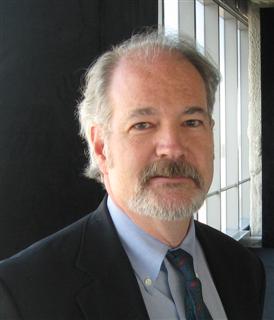
Director
Gift checks should have the following verbiage :
“Gift made on behalf of the
(CHAPTER NAME) Chapter on (DATE)"
Dru Crawley is Bentley Fellow and Director, Building Performance focusing on building performance, zero-energy buildings, decarbonization, digital twins, smart cities, sustainability, and resilience. Prior to being elevated to Bentley Fellow in 2014, he led development of Bentley’s building performance software suite for four years. Before joining Bentley in 2010, Dr. Crawley developed and managed EnergyPlus and the USDOE’s Commercial Buildings Initiative (now Better Buildings Initiative and Alliances) promoting creation of net-zero-energy buildings.
With more than 45 years of experience in buildings energy efficiency, renewable energy, and sustainability, he has worked in engineering software development, government research and standards development organizations, as well as building design and consulting companies. He received his PhD in Mechanical Engineering from University of Strathclyde in Glasgow, Scotland on the topic of building simulation as a policy tool, and a Bachelor of Architecture from University of Tennessee, and is a registered architect.
Dr. Crawley is active in ASHRAE (Director-At-Large on ASHRAE Board, member of Task Force on Building Decarbonization, Chair of Standard 169 (Climatic Data for Building Design Standards), member of SSPC 189.1 (Standard for the Design of High-Performance, Green Buildings Except Low-Rise Residential Buildings), as well as a member of Standards PC 105R, 140, 205R, 209R, 228P, 229P, and 232P. He is a former member and Chair of Standards Committee as well a past member of the Technical Activities, Research Administration, Advocacy, and Grassroots Government Activities Committees, and past chair of Technical Committees 2.8, 4.2, 4.7, and 7.1). He was elevated to ASHRAE Fellow in 2009 and achieved ASHRAE BEMP (Building Energy Modeling Professional) certification in October 2012, and received the ASHRAE Standards Achievement Award (2022), Exceptional Service Award (2013), Service to ASHRAE Research Award (2012), Distinguished Service Award (2003), and Symposium Best Paper Award (1999) for “Which Weather Data Should You Use for Energy Simulations of Commercial Buildings?”
He is also active in the International Building Performance Simulation Association (IBPSA President since 2022, at-large board member since 1998, Fellow in 2012, Regional Affiliate Liaison since 2006), IBPSA-USA (IBPSA-USA board member since 2013, President 2019-2021, Vice President 2017-2019, and Treasurer 2013-2017), U. S. Green Building Council (USGBC, past vice chair and member, Energy & Atmosphere Technical Advisory Group; past member, Research Committee; past research liaison), the American Institute of Architects (AIA), an Affiliate member of CIBSE, and serves on the editorial boards of three international journals. He has written more than 125 papers and articles, testified before the U.S. Congress, lectured at more than 40 universities, and made more than 500 presentations on building energy efficiency, sustainability, and renewable energy throughout the world. As an ASHRAE Distinguished Lecturer, he has given more than 300 presentations and workshops for more than 100 ASHRAE chapters throughout the world.
With the increasing interest in climate change driven by human activity, recent research has focused on the impact of climate change or urban heat island on building operation and performance across the world. But this work usually aggregates the energy and peak demand impacts across a broad sector. In a recent study, impacts on the operating performance of an office building were estimated based on climate change and heat island scenarios in 25 locations (20 climate regions). This presentation presents the variation and differences among the 20 regions when climate change is introduced. The focus is on changes in comfort conditions, building equipment operation as well as daily patterns of energy performance using prototypical buildings that represent typical, good, and low-energy practices around the world. Other issues such as fuel swapping as heating and cooling ratios change, impacts on environmental emissions, and how low-energy building design incorporating renewables can significantly mitigate any potential climate variation are also presented.
Over the last 50 years, building simulation has evolved into a powerful tool for evaluating the energy performance of potential or existing buildings. Building simulation allows easy comparison of the energy and environmental performance of many hundreds of design or retrofit options. This presentation provides an overview of building performance simulation fundamentals and history, Building Information Modeling, what’s in the black box of key simulation programs, as well as comparing underlying simulation methods.